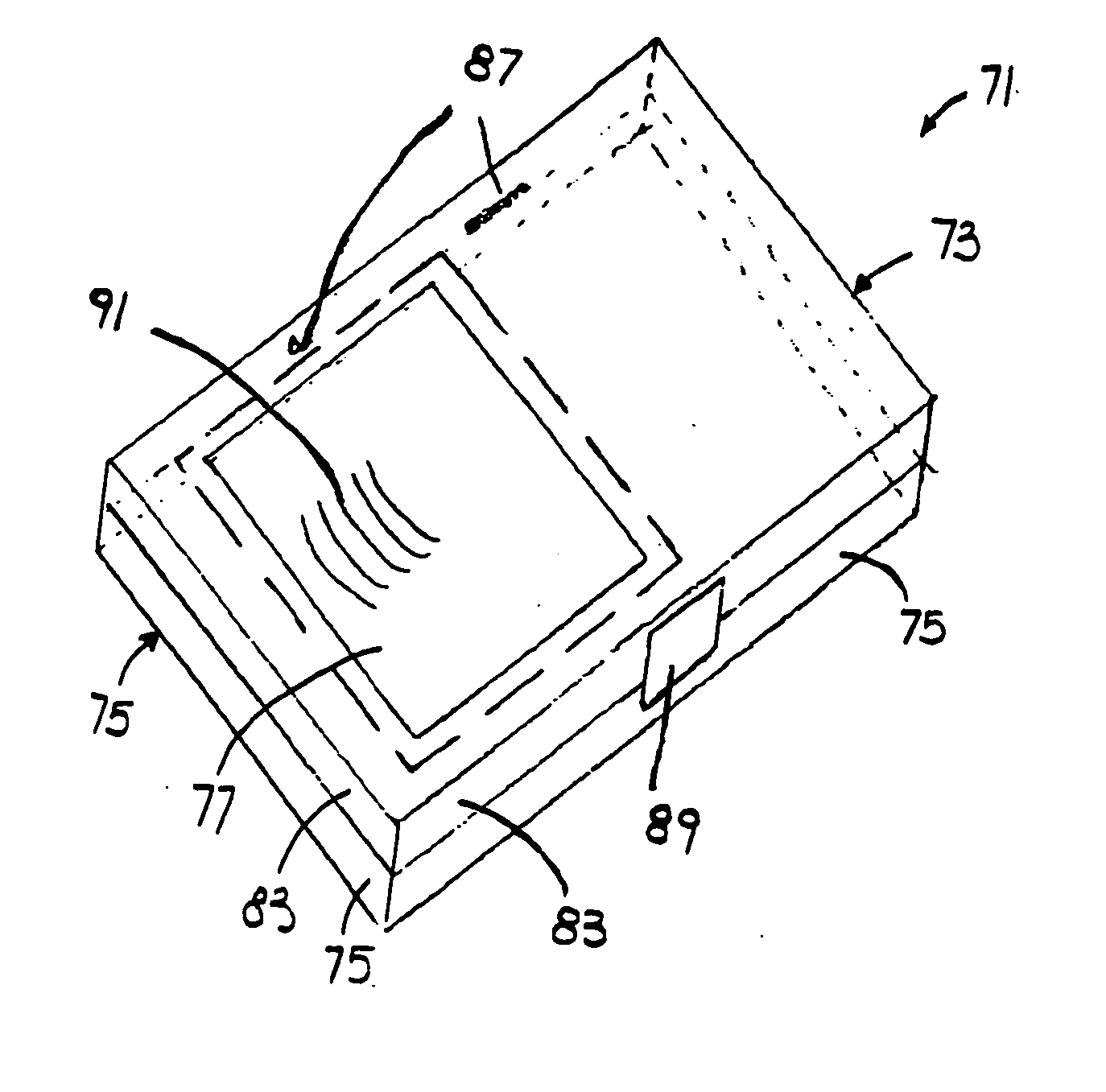Card cases and wallets with radio frequency shielding
a card case and radio frequency shielding technology, applied in the direction of money bags, burglar alarm mechanical actuation, instruments, etc., can solve the problems of identity and other information theft issues that may become increasingly common, data transmitted through the air can be intercepted and read by unauthorized devices and individuals, and achieve the effect of improving grip
- Summary
- Abstract
- Description
- Claims
- Application Information
AI Technical Summary
Benefits of technology
Problems solved by technology
Method used
Image
Examples
first embodiment
[0038]FIGS. 1-3 show a portable enclosure 11. The device 11 has a four-walled 13 flat base 15 and a four-walled 17 flat cover 19. The flat base 15 and the flat cover 19 fit together to create an enclosed space 21. Shielding 23 is located on an inner surface of or within the flat base 15 and the flat cover 19. The shielding 23 is preferably, but not limited to, a metal wire knit or weave, solid metal, particulate matter, knit fabric or other material that may work by just weakening or attenuating the wavelengths associated with enclosed RFID devices. The shielding 23 creates a complete Faraday cage when closed. Base walls 13 overlap 39 with top walls 17. The base 15 and the cover 19 are hinged together with one or more hinges 25 along corresponding edges 27 of the base 15 and the cover 19. The opposite edges 29 of the base 15 and the cover 19 holds a slightly flexible latch 31 that snaps into engagement when closed. The latch 31 has a protrusion 33 that snaps over a catch 35. Unfaste...
second embodiment
[0039]FIGS. 4-6 show a portable enclosure 41. A base 43 has four walls 45 with outwardly re-entrant shielded edges 47. A top 49 has complementary inwardly re-entrant shielded edges 51. The top 49 is slid along the base 43 to retrieve or place devices 37 with embedded RFID within an enclosed space 55. The top 49 may be slid either towards a front 59 or a rear 61 of the base 43 to open the device 41. Shielding 57 is located on an inner surface or throughout the top 49 and the base 43. When the device 41 is closed a complete Faraday cage is created and no RFID information is transmitted outside the device 41.
[0040]FIGS. 7-8 show a third embodiment of a portable enclosure 71. A shielded top 73 fits onto a shielded base 75. A shielded access 77 slides along lugs 79 under the top 73 to open an access opening 81. The shielded access 77 is slid back to an initial position to close the device 71. The access opening 81 allows omni directional reading of an RFID tag. Shielded side walls 83 of ...
PUM
 Login to View More
Login to View More Abstract
Description
Claims
Application Information
 Login to View More
Login to View More - R&D
- Intellectual Property
- Life Sciences
- Materials
- Tech Scout
- Unparalleled Data Quality
- Higher Quality Content
- 60% Fewer Hallucinations
Browse by: Latest US Patents, China's latest patents, Technical Efficacy Thesaurus, Application Domain, Technology Topic, Popular Technical Reports.
© 2025 PatSnap. All rights reserved.Legal|Privacy policy|Modern Slavery Act Transparency Statement|Sitemap|About US| Contact US: help@patsnap.com



